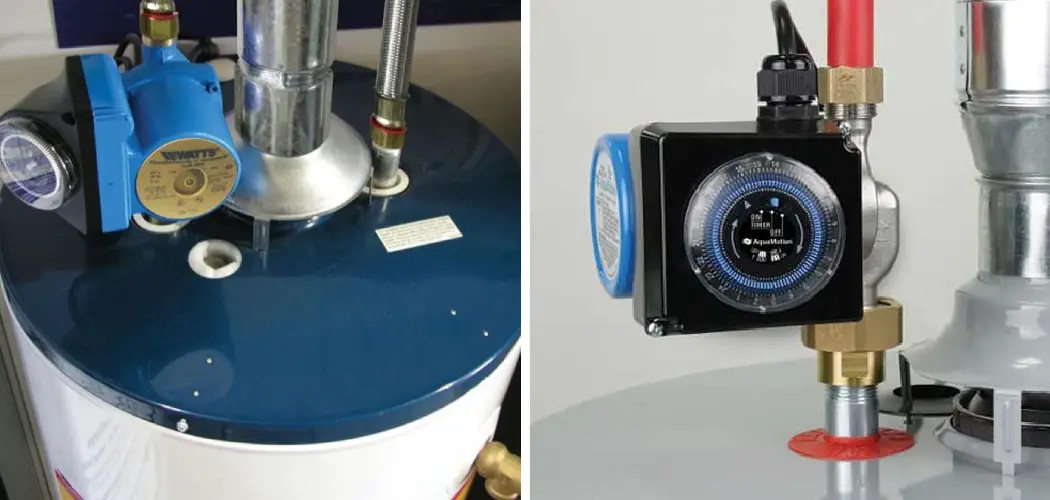Do you want to install a hot water recirculating pump in your home? It’s an efficient, cost-effective way to ensure that you have access to hot water any time of day or night. Not only does it reduce wasted energy, but it also cuts down on wait times for warm, comfortable showers or baths. In this blog post, we will discuss the installation process as well as key considerations and steps so you can be sure that your new hot water recirculating pump is installed properly.
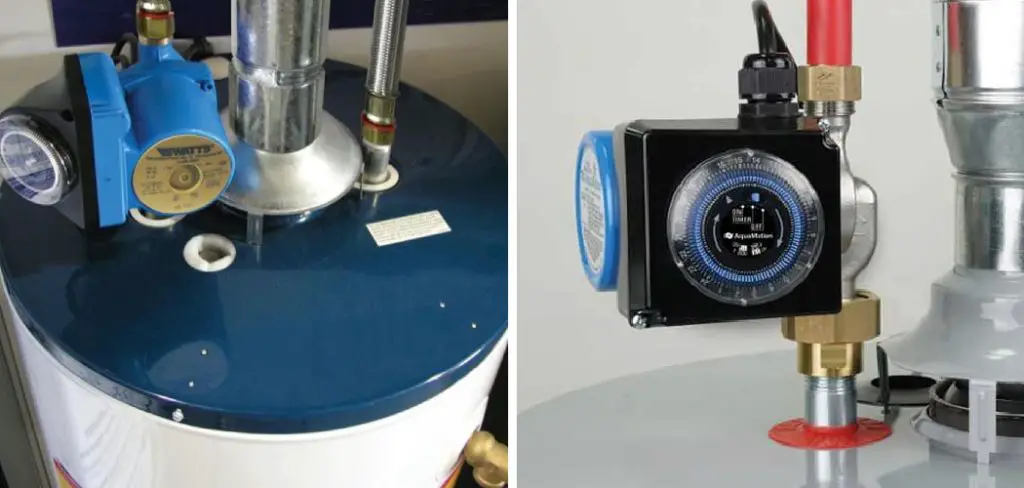
So read on and get ready for effortless access to hot water in minutes! Homes that are equipped with a hot water recirculating pump provide an endless supply of instantaneous, on-demand hot water. Not only does a hot water recirculating pump increase convenience in your home, but it also reduces energy waste by avoiding the need to wait for large amounts of warm or hot water to be delivered from your main plumbing line – saving you both time and money! Installing one may seem like an intimidating task, but if you follow this guide on how to install a hot water recirculating pump!
Benefits of Installing a Hot Water Recirculating Pump
1. Get Hot Water Instantly
A hot water recirculating pump ensures that you have hot water instantly available when you turn on the tap, which makes showering, washing dishes, or doing laundry a much more enjoyable experience.
2. Save Time and Energy
By installing a recirculating pump, you can save time waiting for hot water to reach the tap as well as energy by not having to heat up cold water when you need it. But you have to make sure to plug the pump into a power source so that it works properly.
3. Improve Your Comfort Level
Having hot water instantly available is much more comfortable for you and your family. With a recirculating pump, you don’t have to stand around waiting for the water to get warm before you can take a shower or wash dishes.
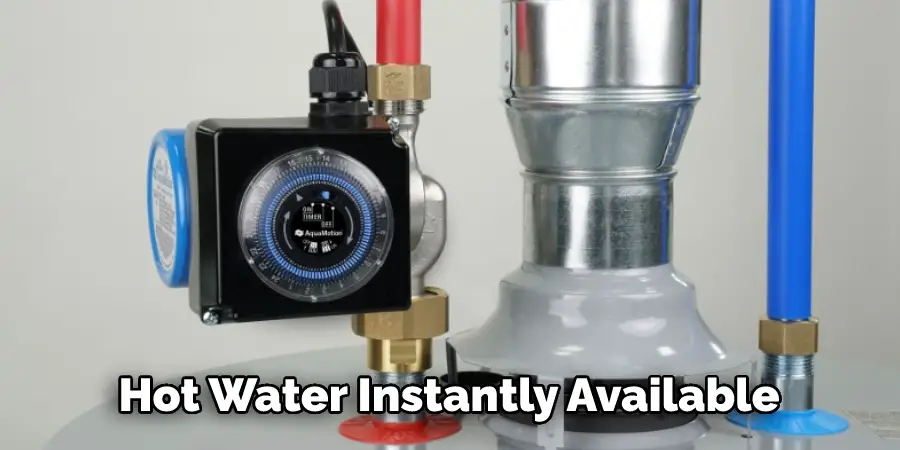
4. Save on Utility Costs
Installing a recirculating pump can help save you money on your utility bills by reducing the amount of water you use and decreasing the amount of energy required to heat up cold water when it’s needed.
5. Reduce Water Waste
Having hot water instantly available prevents you from having to run the tap until it gets warm, which is a huge waste of water. With a recirculating pump, you can start using hot water as soon as you turn on the tap.
By installing a hot water recirculating pump, you can experience these benefits and more. Installing one may seem like an intimidating task at first but with the right tools and instructions; it is actually quite simple. Have a look at our guide on How to Install a Hot Water Recirculating Pump.
How to Install a Hot Water Recirculating Pump in 5 Easy Steps
Step 1: Shut Off the Water Supply
The very first step is to shut off the main water supply to the house. This can be done either on the street or inside your home, depending on your setup. Also, be sure to turn off the power to your water heater. Make sure you know where the shut-off valves are located and how to operate them.
Step 2: Install the Recirculating Pump
Once the water is shut off, you can begin the installation process for your recirculating pump. Start by mounting it on a wall in a convenient location near your hot water heater. Then you’ll need to attach the appropriate plumbing fittings and connect the pump to your existing hot water lines. Make sure all connections are secure and leak-free.
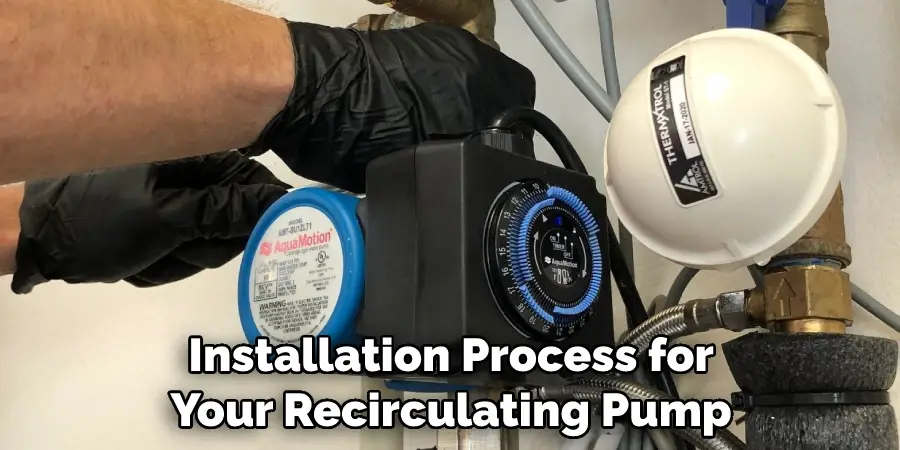
Step 3: Connect the Pump to the Hot Water Heater
Now you’ll need to connect the recirculating pump to your hot water heater. This is done by attaching two hoses to the water supply and return lines. Make sure everything is properly connected and secure.
Step 4: Turn On the Water Supply & Test
Once you’ve completed all the necessary connections, it’s time to turn on your water supply and test the system. Turn on both the main water shut-off valve and power to your water heater, and make sure everything is running properly.
Step 5: Program the Timer & Enjoy
The final step to installing your recirculating pump is programming the timer. This will allow you to set a specific time for when the hot water should start circulating through your home. You can also adjust the settings based on your needs and preferences. After programming the timer, you can sit back and enjoy your hot water on demand!
Once you’ve installed a recirculating pump in your home, you can rest assured knowing that hot water will be available when you need it. Not only is this more efficient, but it also saves time and money! Enjoy being able to take hot showers whenever you want and never worry about running out of hot water again.
Some Additional Tips to Install a Hot Water Recirculating Pump
1. Do Not Over-Tighten Fittings
This is very important. Too much pressure can cause damage to your pipes, both hot and cold water lines. Make sure you use the right amount of torque when installing fittings. Also, make sure that your fittings are made of the correct material.
2. Turn off the Water Supply
Before beginning any installation job, it’s important to turn off the water supply completely in order to guarantee safety while working and avoid flooding. Also, shut off power to any pumps or valves you’re going to be working on.
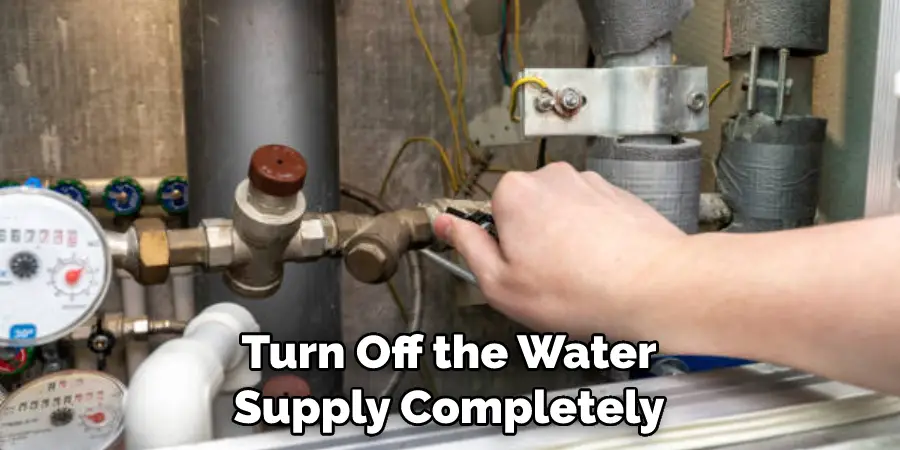
3. Cut and Adjust Pipes Carefully
When cutting pipes with a saw or pipe cutter, take great care not to over-cut the length of the pipe. This can create a weak spot in the joint where water pressure could cause it to damage or come apart. Additionally, make sure that you adjust the hot and cold pipes so that they fit together properly.
4. Secure the Pipes and Fittings
Make sure that all of your pipes and fittings are securely connected with pipe tape, threaded couplings, or other appropriate materials. This will ensure a tight seal and help to minimize any potential leaks in the system.
5. Turn on the Power and Water Supply
Once all the connections are secure, turn the power and water supply back on. Make sure to do this slowly so that you can gauge the pressure levels in your system. If everything is working properly, you should be able to enjoy hot water quickly and conveniently with your new recirculating pump!
6. Check for Leaks
Once the pump is up and running, it’s important to check for leaks. Check all connections and fittings throughout your system to make sure that everything is secure and tight. If you identify any leaks, take steps to address them right away.
7. Follow Regular Maintenance Procedures
Finally, remember to follow regular maintenance procedures on your new pump. Regular maintenance will help to ensure that your system is working correctly, and will help to extend the lifespan of your recirculating pump.
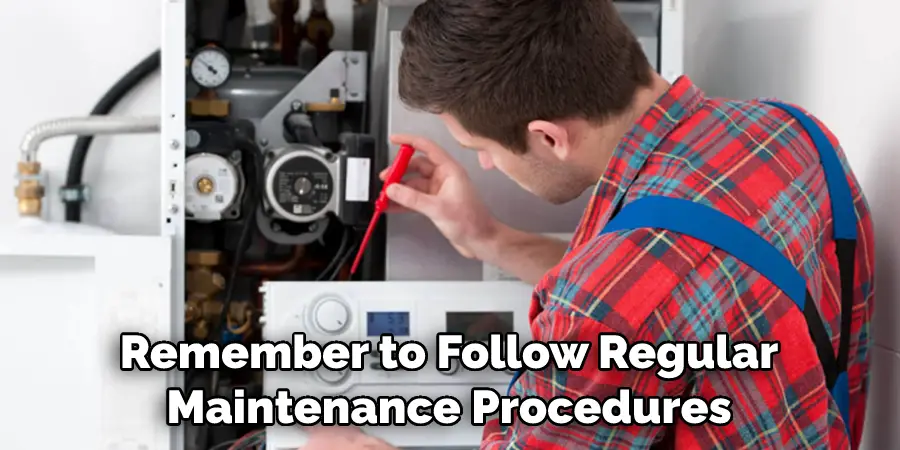
By following these tips and taking proper precautions, you can be sure that your hot water recirculating pump will provide years of reliable service!
Frequently Asked Questions
What Precautions Should I Take When Installing a Hot Water Recirculating Pump?
When installing a hot water recirculating pump, there are several precautions to take. First, you should be sure to turn off the power and water supply before beginning any installation or repair work. Additionally, it is important to read all instructions carefully prior to installation and make sure that all components of the recirculating pump are properly rated for the intended application.
Finally, it is important to use appropriate safety gear and equipment while working with electrical circuits or plumbing fixtures. Additionally, if you are working with a water heater, check local codes to ensure compliance.
Can I Install a Hot Water Recirculating Pump Myself?
Yes, it is possible to install a hot water recirculating pump yourself if you have the appropriate tools and knowledge. The process involves connecting the pump to the existing plumbing system using copper or PEX tubing, mounting the unit on an interior wall, running electrical wiring from a dedicated power source, and adjusting temperatures according to your needs.
If you have any doubts about your ability to complete the installation safely and correctly, it is best to consult a professional.
What Are the Benefits of Installing a Hot Water Recirculating Pump?
Installing a hot water recirculating pump has several benefits, including reducing energy costs, providing instant hot water on demand, eliminating wasted water, and reducing wait time for hot water. Additionally, a recirculating pump can help you conserve resources by circulating already-heated hot water through the pipes in your home instead of from the water heater. This can also save money on your energy bill!
Conclusion
Now you know how to install a hot water recirculating pump. With careful planning and patience, it’s a relatively simple process that can save you time and money in the long run. Make sure to follow all safety precautions when tackling this project.
If any of the steps seem confusing or unclear, don’t hesitate to call a professional plumber for assistance. With the right tools and knowledge, you can successfully install your hot water recirculating pump and enjoy the convenience of hot water in no time! Good luck with your project. But make sure to stay safe!

